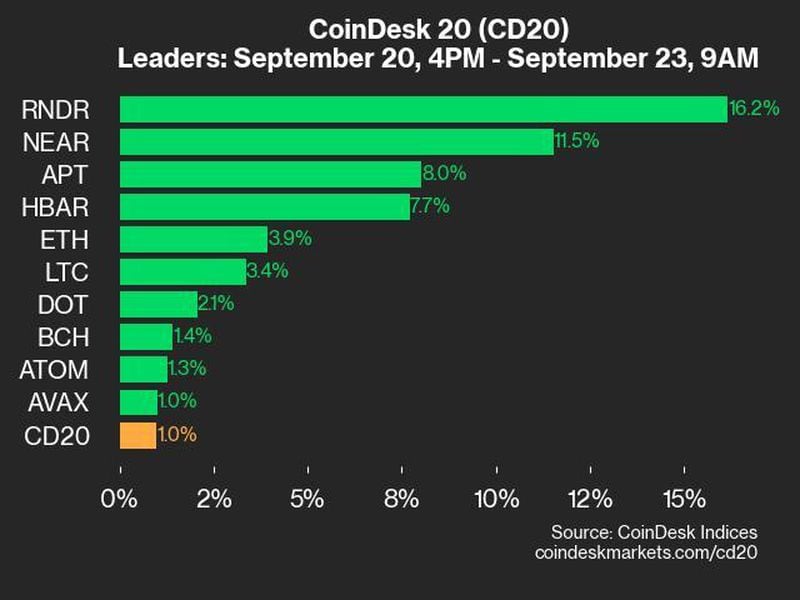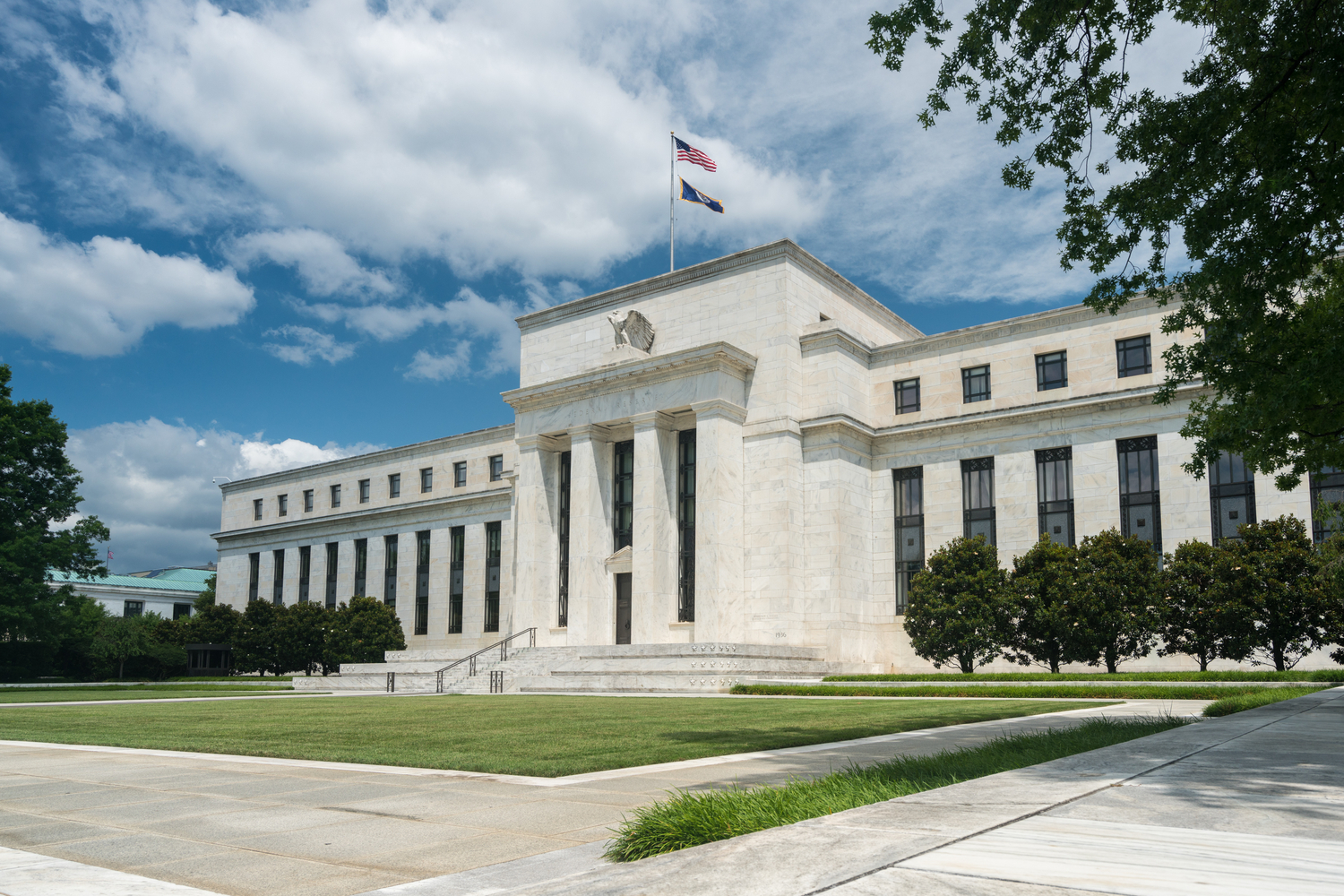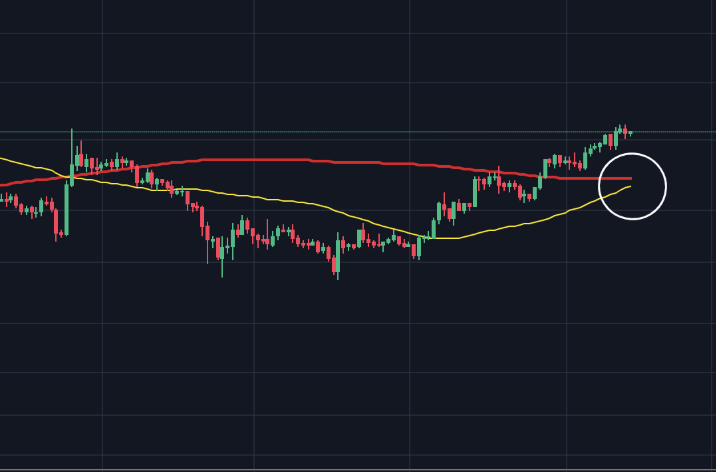The Biden Administration Is Politicizing Crypto
Christy Goldsmith Romero
Commissioner
U.S. Commodity Futures Trading Commission
Explore the policy fallout from the 2022 market crash, the advance of CBDCs and more.
Christy Goldsmith Romero
Commissioner
U.S. Commodity Futures Trading Commission
Explore the policy fallout from the 2022 market crash, the advance of CBDCs and more.
:format(jpg)/www.coindesk.com/resizer/AYsZakas8ylegdN7CxYrbIoL-2Q=/arc-photo-coindesk/arc2-prod/public/7Y6UB5O4FZBO5O7BEG6THLNK5Y.jpg)
Michael J. Casey is CoinDesk’s Chief Content Officer.
Christy Goldsmith Romero
Commissioner
U.S. Commodity Futures Trading Commission
Explore the policy fallout from the 2022 market crash, the advance of CBDCs and more.
Christy Goldsmith Romero
Commissioner
U.S. Commodity Futures Trading Commission
Explore the policy fallout from the 2022 market crash, the advance of CBDCs and more.
Crypto has always been a divisive issue in the U.S., but never a partisan one. Until now.
The Congressional Blockchain Caucus has had a healthy mix of Democrats and Republicans among its membership, and many legislative proposals boast bipartisan sponsorship, including the digital-assets regulatory framework bill drafted by Sens. Cynthia Lummis (R-Wyo.) and Kirsten Gillibrand (D-N.Y.)
Now, with a string of high-profile enforcement announcements from the Securities and Exchange Commission and the Commodity Futures Trading Commission against crypto entities, we are at risk of losing that balance. Whether intended or not, crypto is becoming politicized, and is now on the long list of topics that a divided, gridlocked U.S. Congress is unable to resolve. Little good can come from this.
You’re reading Money Reimagined, a weekly look at the technological, economic and social events and trends that are redefining our relationship with money and transforming the global financial system. Subscribe to get the full newsletter here.
The matter is so weighty that CoinDesk Editor-in-Chief Kevin Reynolds penned an essay laying out the newsroom’s concerns about the perception regulators have allowed to foster that they are “trying to kill crypto.” It was only the second time that CoinDesk has taken a formal position on a matter, the last time being a piece that I jointly bylined with Executive Editor Marc Hochstein on a law that threatened to impose invasive surveillance on all cryptocurrency transactions.
SEC and CFTC enforcement actions and investigation warnings have been delivered, like a relentless cannon barrage, against giants of the crypto economy: Kraken, Paxos, Binance, Coinbase and more. They’ve coincided with ever-louder vocal attacks on the industry by influential progressives like Sen. Elizabeth Warren (D-Mass.) – who in a reelection campaign tweet this week proudly cited a Politico headline that had said she was “building an anti-crypto army” – and with a damning White House report on the sector. To many in the industry, it feels like war has been declared. Why, exactly, is unclear – other than there’s perhaps a political imperative to look tough in the wake of the FTX debacle and whipping boys are always useful in politics.
Stereotype-defying diversity
Many of us were drawn into this industry because of its potential to tackle the economic costs and restrictions imposed by financial and digital gatekeepers. It was never a left-versus-right thing. If anything, the division around crypto is defined by decentralization versus centralization.
An advocate for the technology might be inspired by anti-corporate monopoly ideas traditionally associated with the left but could equally be motivated by typically conservative beliefs in the value of free markets. In the developing world, the technology’s potential is often tied to liberal causes such as social and financial inclusion and to using it to bypass authoritarian regimes. In the developed world, it’s more often seen as a force for free-market innovation or for projecting libertarian principles on property rights.
Consider also the types of people and institutions the crypto community encompasses: retail and institutional traders, celebrity venture capitalists, nerdy computer scientists, financial engineers, impassioned human-rights activists, musicians, artists, United Nations agencies, Ukraine war effort supporters, pacifists, Austrian economists, supply-chain managers, accountants. The list goes on.
That diversity can breed tension within the community. Unbeknown to many outsiders, there’s persistent acrimony between Bitcoin’s hard-money ideologues, who believe that blockchains are for money only and that bitcoin is the only form of money that matters, and Ethereum supporters, who want to apply smart contracts and tokenomics to every problem in the world.
Of course, diversity is also crypto’s strength. The breadth of backgrounds, opinions, talents, experiences, cultural perspectives and social and economic standings creates a rich pool of ideas and debate that can accelerate the open-source innovation that’s core to this technology.
In this context, the instinct among critics to pigeon-hole everyone in the industry into the stereotype of the ugly, self-obsessed, money-grabbing “crypto bro” infuriates me. It’s a lazy way to understand the world.
Worse, when politicians and regulators with access to media megaphones repeatedly use these catchall memes, they amplify these black-and-white distinctions, invoking fear and hatred for politically expedient reasons.
Yes, it’s true that some members of the crypto community are guilty of running massive scams that led to billions in losses and that others are at fault for trusting in those scam artists. But to assume that every person interested in this technology either behaves like Sam Bankman-Fried or was duped by him, wildly misrepresents the reality.
Crypto is a technology. Nothing more
The word “crypto” has sadly become one of those simplifying memes, referring in the public mind not to a suite of technologies, but to a group of people, a culture or even an industry. Saying “I’m in crypto” should be no more an expression of ideology or lifestyle preference than saying “I’m in software” or “I’m in aeronautics.”
The word “crypto” came into favor around 2017 as shorthand for the rapidly expanding industry of tokens and smart-contract platforms. This was after “blockchain” – which also got distorted by its association with a failed model of private distributed ledgers for enterprises – proved to be an misleading alternative to “Bitcoin,” which for a while was the only word that outsiders to the industry recognized.
No one specifically chose “crypto.” It arose organically. But it was clearly a nod to cryptography, the field of math on which not only cryptocurrencies but all computing security is based. It was also an acknowledgement that only public “permissionless” blockchains, like Bitcoin – which require a cryptocurrency to function – were capable of meaningful decentralization, and of the innovation that comes with that, because corporate-led private (permissioned) blockchains were constrained by centralized gatekeepers.
So “crypto” became a broad term, used to describe a variety of technologies running on a wide range of protocols that shared this common permissionless, crypto token-based governance structure. It was meant to describe an entirely apolitical, amoral, technological concept. But thanks to the exaggerated, ill-informed claims of its critics in Washington, some in the nation’s capital now see the term as the label applied to some kind of dangerous cult.
This brings us to federal agencies’ never-acknowledged but clearly intended instructions to banks to avoid servicing “crypto” companies, the outcome of a suspected shadow policy that observers are calling Operation Choke Point 2.0. Irrespective of whether there is an official campaign from bank supervisors, account officers have clearly gotten the memo to tell prospective customers that if they are “in crypto” they won’t be signed up.
Here’s the problem: What defines being “in crypto?” BNY Mellon (BNY), the biggest custodial bank in the world, runs a large crypto custody service. Is Bank of America (BAC) or Citigroup (C) going to close BNY Mellon’s counterparty lines? I rather think not.
Should bankers stop dealing with Fidelity Investments, whose digital assets unit has run Bitcoin nodes for many years, has helped fund the Massachusetts Institute of Technology’s In Digital Currency Initiative and recently launched a retail crypto product? Or Franklin Templeton, which is now experimenting with tokenized music royalties as a portfolio offering for its mutual fund clients? Or Mattel (MAT), or Salesforce (CRM), both of which are working with Polygon to build Web3 services? Or Nike (NKE), which has launched an NFT platform for digital versions of its sneakers? Or Adidas? Or the National Basketball Association? Or Major League Baseball? Or the National Football League? Or J.P. Morgan Chase (JPM), which despite CEO Jamie Dimon’s protestations about cryptocurrencies being worthless, has spun up its own subsidiary dedicated to building digital currency and blockchain products?
All these companies – along with tens of thousands more – are, in a variety of ways, “in crypto,” touching the very same technology in similar ways to how Coinbase, Kraken and, dare I say it, FTX touch it, the same technology that politicians are tying to a dangerous cult.
What constitutes unwelcome crypto activity in the eyes of bankers is clearly not based on the technical considerations. It’s about perception, image, reputation and ill-defined, vague associations. And that’s a direct result of this issue being politicized.
The upshot, without any doubt, is that crypto innovators – that varied and multifaceted group of people representing a giant, diverse global community – will leave the United States. The technology doesn’t care. It’s global, borderless. So other, more constructive jurisdictions will win out while the U.S. falls behind in innovation and in the economic opportunities that come with it.
As recently as last year, when President Biden issued a balanced, forward-looking executive order on digital assets, I was of the belief that, despite Congress’ foot-dragging on important legislation and despite the SEC’s hostility toward the sector, the U.S. could still take leadership of this industry. I saw a chance for the U.S. to do with crypto what it had done with the Telecommunications Act of 1996, which set a workable open-standard for regulating the internet that, when the entire world followed it, became the framework for our online world. That chance is now lost.
Edited by Ben Schiller.
Learn more about Consensus 2023, CoinDesk’s longest-running and most influential event that brings together all sides of crypto, blockchain and Web3. Head to consensus.coindesk.com to register and buy your pass now.

DISCLOSURE
Please note that our
privacy policy,
terms of use,
cookies,
and
do not sell my personal information
has been updated
.
The leader in news and information on cryptocurrency, digital assets and the future of money, CoinDesk is a media outlet that strives for the highest journalistic standards and abides by a
strict set of editorial policies.
CoinDesk is an independent operating subsidiary of
Digital Currency Group,
which invests in
cryptocurrencies
and blockchain
startups.
As part of their compensation, certain CoinDesk employees, including editorial employees, may receive exposure to DCG equity in the form of
stock appreciation rights,
which vest over a multi-year period. CoinDesk journalists are not allowed to purchase stock outright in DCG
.
:format(jpg)/www.coindesk.com/resizer/AYsZakas8ylegdN7CxYrbIoL-2Q=/arc-photo-coindesk/arc2-prod/public/7Y6UB5O4FZBO5O7BEG6THLNK5Y.jpg)
Michael J. Casey is CoinDesk’s Chief Content Officer.








